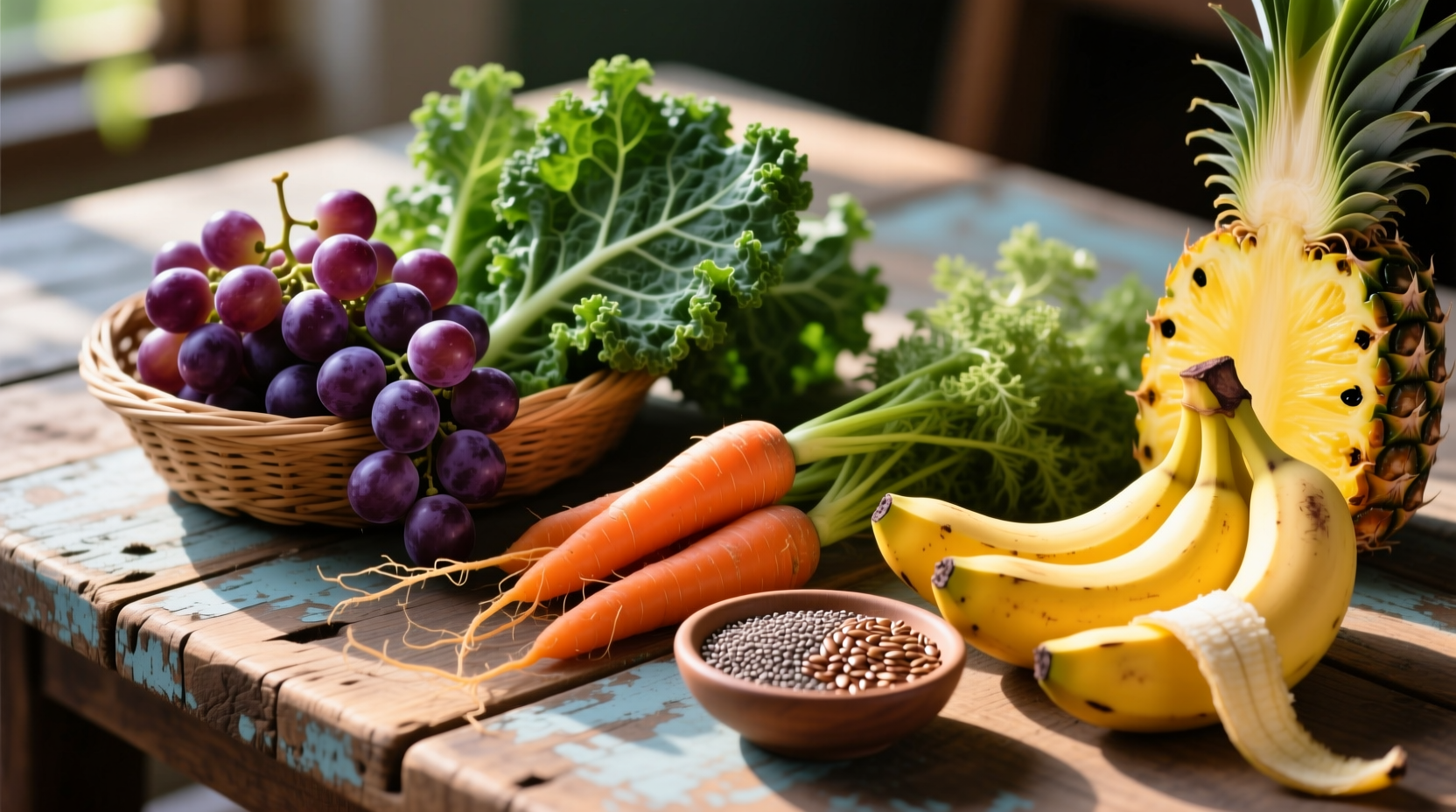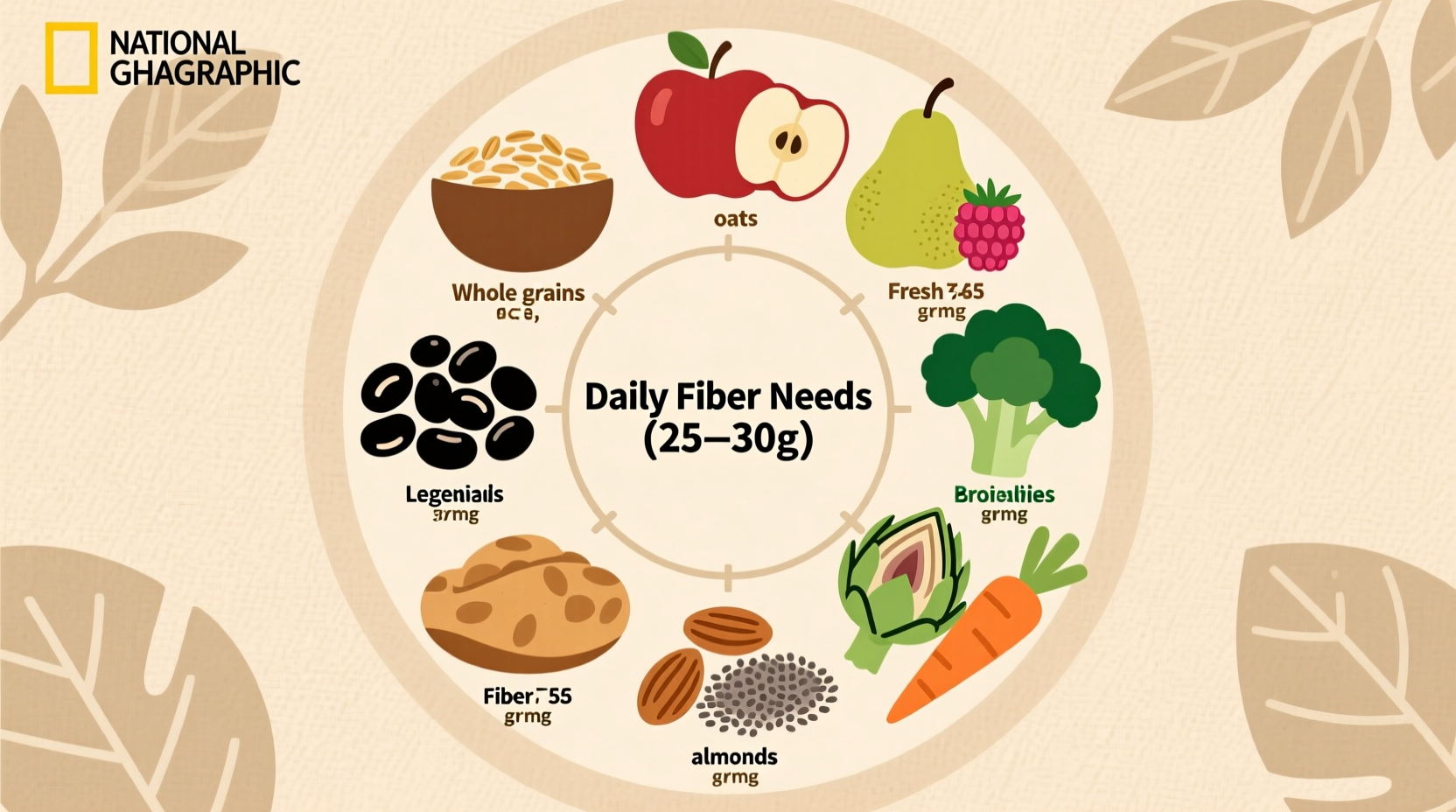Discover the top 25 high-fiber foods that deliver 3-14g per serving—including fruits, vegetables, whole grains, legumes, and seeds. Adults need 25-38g daily for optimal digestion, heart health, and blood sugar control, yet 95% fall short. This guide reveals exactly which foods to eat, how much to consume, and practical ways to reach your daily fiber goals.
Feeling sluggish or struggling with digestion? You're not alone. Most adults consume only 15g of fiber daily—less than half the recommended amount. The 2020-2025 Dietary Guidelines for Americans confirm that adequate fiber intake reduces risks of heart disease, diabetes, and digestive disorders. But which foods actually deliver? Let's cut through the confusion with science-backed choices you can implement today.
Why Fiber Matters: Beyond Digestion
Fiber isn't just for preventing constipation. Research from the American Heart Association shows that every 7g increase in daily fiber correlates with a 9% lower risk of heart disease. Soluble fiber (found in oats and beans) lowers LDL cholesterol, while insoluble fiber (in whole wheat and vegetables) maintains bowel health. Both types feed beneficial gut bacteria, strengthening your immune system.
Your Fiber Roadmap: Top Food Categories
Fruits That Pack a Punch
Forget processed fiber bars—nature's candy delivers fiber with bonus nutrients. One medium pear with skin provides 5.5g fiber, while a cup of raspberries delivers 8g—more than most breakfast cereals. Apples, bananas, and oranges contribute 3-4g per serving, but always eat the skin for maximum benefit.
Vegetable Powerhouses
Artichokes reign supreme with 10g per medium vegetable. Broccoli (5g per cup cooked), Brussels sprouts (4g per 8 sprouts), and sweet potatoes with skin (4g each) make easy side dish swaps. For maximum fiber retention, steam rather than boil vegetables—water-soluble fiber leaches into cooking water.

Whole Grains That Deliver
Not all "whole grain" labels are equal. True high-fiber options include:
- 100% bran cereal (14g per 1/2 cup)
- Barley (6g per cooked cup)
- Oats (4g per 1/2 cup dry)
- Quinoa (5g per cooked cup)
Legumes: The Fiber Champions
Beans and lentils provide 15g+ per cooked cup. Split peas (16g), lentils (15g), black beans (15g), and chickpeas (12g) make affordable protein-fiber combos. Pro tip: Rinse canned beans to reduce sodium by 40% while preserving fiber content.
Nuts and Seeds for Snacking
Two tablespoons of chia or flax seeds deliver 5-6g fiber—perfect for smoothies or yogurt. Almonds (3.5g per ounce) and pistachios (3g per ounce) satisfy cravings while boosting intake. Remember: seeds retain more fiber when ground (flax) or soaked (chia).
| Food | Serving | Total Fiber (g) | % Daily Value |
|---|---|---|---|
| Split Peas | 1 cup cooked | 16 | 57% |
| Artichoke | 1 medium | 10 | 36% |
| Raspberries | 1 cup | 8 | 29% |
| 100% Bran Cereal | 1/2 cup | 14 | 50% |
| Chia Seeds | 2 tbsp | 10 | 36% |
Practical Fiber Integration Strategies
Adding fiber too quickly causes bloating. Follow this 4-week progression:
- Week 1: Add one high-fiber food at breakfast (oats or berries)
- Week 2: Replace refined grains with whole grains at one meal
- Week 3: Include legumes in two meals weekly
- Week 4: Snack on nuts/seeds instead of processed options
When Fiber Requires Caution
While beneficial for most, certain conditions require modified approaches:
- Irritable Bowel Syndrome: Focus on soluble fiber sources (oats, carrots)
- Diverticulitis flare-ups: Temporarily reduce seeds/nuts
- Kidney disease: Monitor potassium alongside fiber intake
Fiber Myths Debunked
Myth: All whole grains are high-fiber
Reality: Some contain minimal fiber—check labels for at least 3g per serving
Myth: Fiber supplements equal whole food benefits
Reality: Whole foods provide vitamins, minerals, and phytonutrients supplements lack
Myth: More fiber is always better
Reality: Exceeding 50g daily may cause nutrient malabsorption—stick to recommended ranges











 浙公网安备
33010002000092号
浙公网安备
33010002000092号 浙B2-20120091-4
浙B2-20120091-4